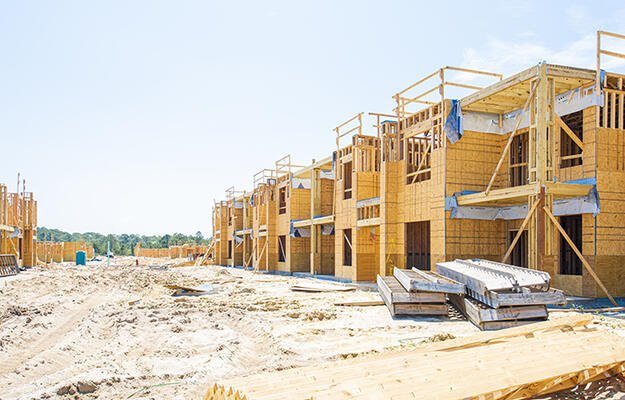
Can Neighborhood Amenities Bridge Divided Communities?
By Maya Brennan
The communities, daily lives, and economic opportunities of American households reflect the inequalities evident in national data. Through market mechanisms, income inequality—and its racial dimensions—have shaped the landscape of American neighborhoods as much as any land-use policy. Yet, public policy priorities and public opinion surveys suggest that Americans’ acceptance of stark inequality may be waning. As part of the solution, local leaders are looking for ways to not only address economic exclusion but also create formal and informal gathering grounds that reach across geographic, socioeconomic, and racial divides.
This is no small challenge. As research from Rolf Pendall and Carl Hedman at the Urban Institute has documented, the most and least advantaged neighborhoods within a commuting zone tend to be separated by either long distances or physical barriers. And in most large areas, the income gap between the most and least advantaged neighborhoods grew from 1990 to 2010.
Community organizations in cities across the country have seized the opportunity presented by gentrification and mixed-income developments to create spaces designed to have an inclusive appeal and reduce microsegregation. If successful, these civic spaces will foster familiarity between groups who otherwise may never interact.
Two communities could hardly be more different than those on opposite sides of the Anacostia River in Washington, DC. Among the Census tracts within a one-mile radius of the 11th Street Bridge, the median home value is almost 2.5 times higher on the west than on the east. Neighborhoods on the east side of the river exhibit further disadvantages, including a child poverty rate 2.5 times as high as the communities to the west and an unemployment rate of 20.7 percent—three times as high as that found on the other side of the river. A baseline health assessment of the 11th Street Bridge park area found that Ward 8, which lies east of the river, ranks poorly on various health indicators compared with Ward 6 to the west.
Despite living just blocks away from the river, the division between the two communities is so strong that Scott Kratz, director of the 11th Street Bridge Park, describes residents to the west not even knowing where the river lies in relation to their house and residents to the east having never traveled two stops on the DC Metro system to go to one of the Smithsonian museums.
With the replacement of the 11th Street Bridge came a vision for a park that would not just run between these communities, but connect them. “That goal resonates with communities on both sides of the river,” says Kratz.
To move from a goal to implementation, Kratz started by asking for the communities’ permission to engage in the work and for their input on the project’s design. The planning process for the 11th Street Bridge Park was “extraordinarily inclusive,” according to a new report on the park’s planning. Kratz participated in more than 200 community meetings over three years to discuss the concept before bringing in any landscape architects or designers. Whether this inclusive process and a deliberate emphasis on equitable development will generate results is not yet known, but it is the subject of ongoing evaluation by researchers at the Urban Institute.
Prior evidence suggests that the vision for shared spaces should be modest but that even modest results can be meaningful. Using the same grocery store, child care center, park, or other neighborhood space doesn’t build deep personal connections, but it allows people to cross paths. Sociologist Mario Small has found that even weak connections can help build trust. And according to research using the Los Angeles Family and Neighborhood Survey, the more frequently people’s paths cross, the higher their levels of trust, exchanged favors or information, and collective efficacy—a willingness to take action to achieve common goals.
The quest for intentionally integrated spaces can be seen not just in the 11th Street Bridge Park, but also in community efforts around the country. As previously described on How Housing Matters, some of these community efforts work through the arts in a process known as creative placemaking. As neighborhood anchors, schools provide another opportunity for intentional integration.
City Garden Montessori, a public charter school in St. Louis, was established to provide a high-quality public education option in a low-income neighborhood. The school’s attendance zone was drawn deliberately for inclusion. At the school’s inception, its attendance zone was about 40 percent white, 60 percent African American, and 60 percent low-income. But the school’s educational success is changing the neighborhood.
“What we are experiencing highlights the realities about segregation and why it happens,” said City Garden’s executive director Christie Huck in testimony at a US congressional hearing. The ability to choose one’s neighborhood or school is effectively bound by race and income. “The segregation of our schools and our neighborhoods will not change without policy to interrupt these trends and to create alternatives,” according to Huck. To continue working toward an integrated high-quality educational opportunity, the City Garden community has its eyes on policies, such as affordable housing, that can “support and sustain the diversity of our neighborhoods.”
Karl Alexander, a sociologist at Johns Hopkins University, is trying a different approach to school integration in Baltimore. Half of the children born in Baltimore City do not end up enrolling the city’s schools by kindergarten. Many families, especially those who are nonpoor or nonminority, either move or opt for private school. In response, Alexander founded the Thurgood Marshall Alliance, which aims to help the city’s public schools attract a racially and economically integrated student body. The alliance’s work will include supporting schools in enrollment outreach, inclusive educational practices, and developing wraparound services to ensure a high-quality education for all students. The effort will spend the next school year in the planning phase, focusing on neighborhood-zoned schools that could become more integrated by attracting a more representative group of families who already live nearby.
A common theme within these practices and within the research is that intention, patience, and transparency matter. Divisions do not disappear easily. But the evidence supports the premise of using community-level change to affect individual life opportunities, foster connections, and build trust. However, as Kratz cautions, “that trust is extremely fragile.”


